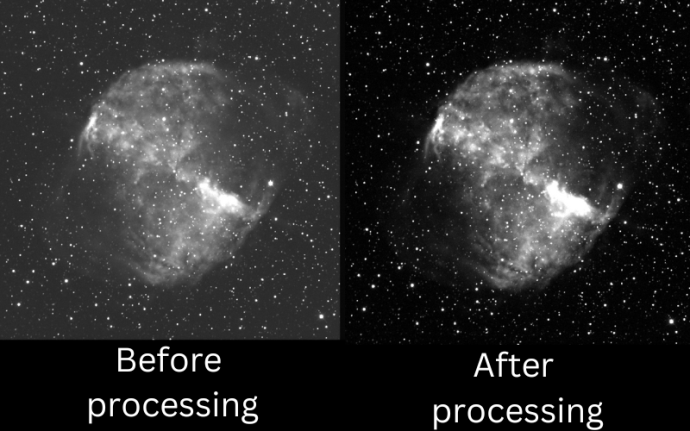When you use a large telescope, like the LT, you are collecting data. The image is actually a huge grid of numbers. This data comes back in a raw form.
To be able to view and analyse the observation you must process the images using special software. This allows you to find out more than you could from just looking at a picture.
Our digital cameras do the same thing, but they do the processing for us.

There are a few stages involved in processing a raw image:
- Debiasing
Often the instruments used on a telescope have a signal put into them which we call a bias. This is so that there is always a baseline signal in the instrument.
This must be removed before measuring the signal coming from the object we are interested in.
- Flat-Fielding
In astronomy, we are always taking images that include some background sky.
The sky does not have a uniform (or flat) colour or brightness. The brightness changes as the Sun sets, and varies across the sky. It can also depend on the colour (wavelength) you are looking in.
Every evening, we look across the sky to correct for any darker or brighter areas in the images. We want to make sure we have all the right information!
- Calibration
We want to know how bright objects in space are. To do this, we compare the object of interest with something with a known brightness. This could be a star that does not change in brightness (called a standard candle).
We can then calibrate our observations so that our measurements are true.
